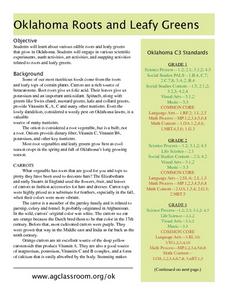Curated OER
Dietary Fiber
Students examine the different types of fiber and their benefits. In this investigative lesson plan students find good sources of fiber in different foods.
Curated OER
Determination of the Physical Properties of Dietary Fibers
In this dietary fibers learning exercise, learners compare and contrast the properties of different fibers: cellulose, hemicellulose, pectin, guar, agar, and xanthan gum. This learning exercise has 5 short answer questions.
Curated OER
Fiber and Water
In this human body worksheet, young scholars determine why the body needs water and how the body uses the water. Students understand the importance of fiber in their diet and how the body uses fiber. This worksheet has 14 short answer...
Curated OER
Lesson 3: Nutrition, Labeling and Packaging
Students explore basic nutrition concepts to help them select healthy diet, evaluate food intake, discuss major food labeling issues, design labels for food products, examine history of food packaging development and how packaging...
Curated OER
The Effects of the Calcium Ion on Cooked Dry Beans
High schoolers investigate the effects of calcium ions on the quality characteristics of cooked dry beans. In this calcium ion and dry bean investigation lesson plan, students soak dry beans using 2 different soaking techniques and 2...
Curated OER
The Beet Goes On
Root vegetables inspire the series of activities included here. Class members participate in activities related to language arts, social studies, science, visual art, and math. At first, the long list might feel overwhelming; however,...
Curated OER
Healthy Tonic: Label Reading
In this factual text worksheet, 6th graders read a bottle label for a delicious tasting tonic for optimal health. Students must read the factual text and answer the six reading comprehension questions that follow.








